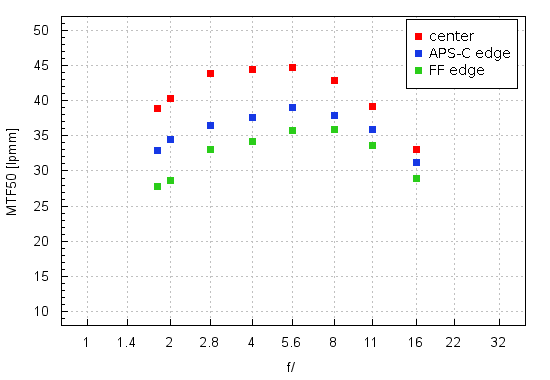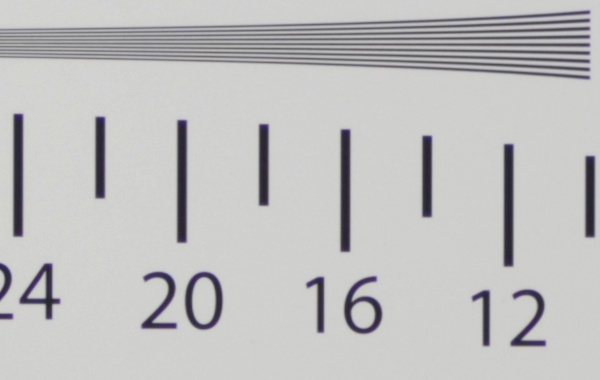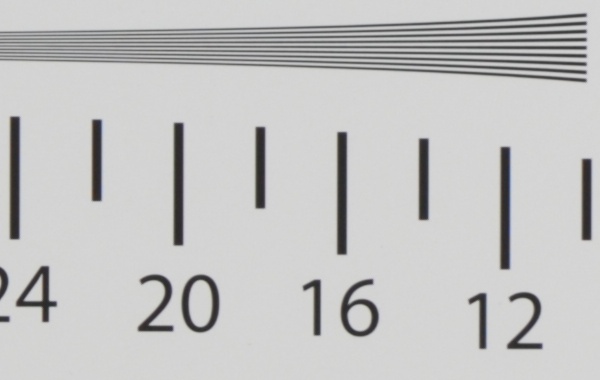Tamron SP 35 mm f/1.8 Di VC USD
4. Image resolution
Now let’s check how the tested lens compares here.

Please Support UsIf you enjoy our reviews and articles, and you want us to continue our work please, support our website by donating through PayPal. The funds are going to be used for paying our editorial team, renting servers, and equipping our testing studio; only that way we will be able to continue providing you interesting content for free. |
- - - - - - - - - - - - - - - - - - - - - - - - - - - - - - - - - - - - - - - - - - - - - - - -
When it comes to the maximum relative aperture the performance is simply great. The MTFs of the tested Tamron are able to reach a very high level of 39 lpmm. It makes that lens better not only than its 45 mm brother but also than the Nikkor AF-S 35 mm f/1.8G ED, which barely exceeded 30 lpmm, and the Canon EF 35 mm f/2 IS USM, which by f/2.0 could get to just 38 lpmm. Still the Sigma A 1.4/35 remains a class of its own – it reaches 39 lpmm by f/1.4.
The results of the Tamron 1.8/35 near the maximum relative aperture are so brilliant that we are actually surprised there are no record-breaking values by f/4.0-5.6. Instead of 47-49 lpmm you get something close 45 lpmm so exactly as much as in the case of the Tamron 1.8/45. The Nikkor AF-S 1.8/35G and the Canon 2/35 IS give you something more but not a lot of it; still again the Sigma didn’t have any problems with exceeding a value of 47 lpmm. It’s also worth adding that the Canon and the Sigma were tested on the Canon reflex camera which provides MTFs slightly lower than those from the D3x so the results of those lenses should be increased by at least 1 lpmm.
When it comes to the performance on the edge of the APS-C sensor once again the tested Tamron manages it very well. Even at the maximum relative aperture it exceeds significantly the decency level and on stopping down it is able to reach very good results. It seems to fare slightly better than the Canon 2/35 IS and noticeably better than the Nikkor 1.8/35G. What’s important, this time the Tamron was also able to defeat the Sigma - despite its inferior aperture fastness it had results slightly better than its most serious rival.
Some small reservations you can have when it comes to the performance at the maximum relative aperture on the demanding edge of full frame; still on stopping down the situation improves swiftly and near f/2.2 the image is already of sensible quality. A swift reaction to stopping down is indeed one of the strong points of the tested Tamron. The Canon and the Sigma improved a lot slower and, as a result, the first of them reached the decency level only near f/3.5 and the Sigma, even if able to produce images of decent quality already from about f/2.0, didn’t impress us with its maximum results which barely exceeded 33 lpmm. On the edge of the frame the Tamron prevails over the whole group of 35 mm lenses, mentioned in this chapter of our test - a round of applause!
At the end of this chapter, traditionally, we present crops taken from photos of our resolution testing chart, saved as JPEG files along with RAW files we used for the analysis above.
| Nikon D3x, JPEG, f/1.8 |
 |
| Nikon D3x, JPEG, f/5.6 |
 |






